Green Spaces

What are the economic benefits associated with urban green spaces ?
Urban green spaces provide economic benefits to cities, including increased property values, reduced air pollution, and enhanced tourism. These spaces improve the living environment, leading to higher home and rental prices, increased tax revenue, and healthcare cost savings. Additionally, they attract tourists, boosting the local economy through job creation and multiplier effects. Investing in urban green spaces is beneficial for both the environment and city prosperity.
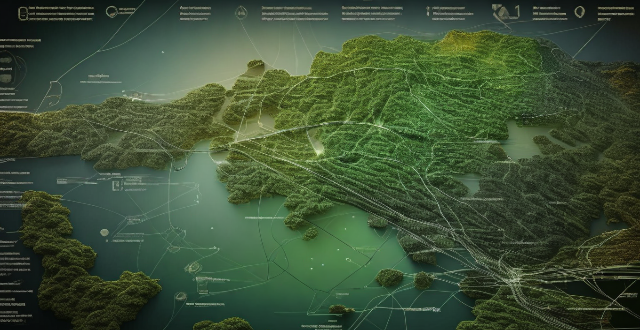
What role do urban green spaces play in climate adaptation strategies ?
Urban green spaces play a crucial role in climate adaptation strategies by providing cooling effects, carbon sequestration, flood control, and habitat preservation. To effectively incorporate these spaces into climate adaptation efforts, city planners should conduct assessments, develop comprehensive plans, collaborate with local communities, monitor and evaluate projects, and educate residents about the benefits of green spaces.
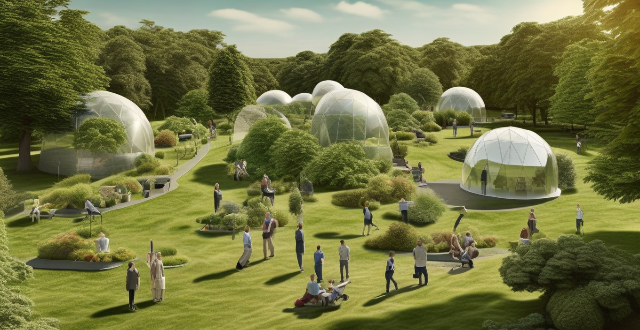
How can an understanding of environmental psychology aid in the design of green spaces that enhance mental health ?
The text discusses the importance of environmental psychology in designing green spaces that enhance mental health. It highlights key principles such as biophilia, perceptions of safety, social interaction, cognitive restoration, and sensory experiences. The article suggests incorporating natural elements, defined areas, communal facilities, quiet zones, and multisensory features to create green spaces that promote relaxation, community building, cognitive engagement, and overall well-being.
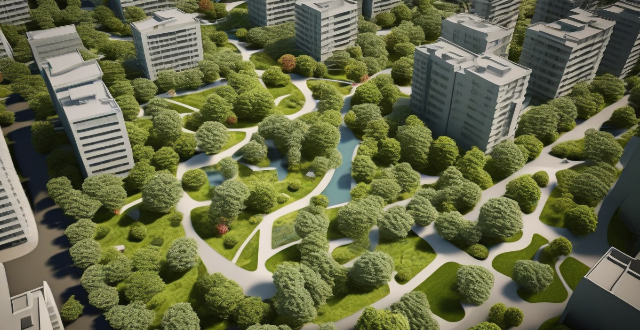
How can urban green spaces improve residents' quality of life ?
Urban green spaces, including parks and community gardens, play a key role in enhancing the quality of life for city residents by providing physical, mental, social, and environmental benefits. Physical health is improved through increased physical activity, better air quality, and mitigation of the heat island effect. Mental health benefits include stress reduction, enhanced mood, and improved cognitive function. Social well-being is boosted through community building, recreational opportunities, and educational value. Environmentally, urban green spaces contribute to biodiversity conservation, water management, and carbon sequestration. These areas are essential for comprehensive wellness in urban environments and should be a focus in future city planning.

What role do green spaces play in making cities more adaptable to climate change ?
Green spaces are crucial for making cities more adaptable to climate change. They mitigate the heat island effect, improve air quality, enhance biodiversity, reduce flood risks, and provide recreational opportunities. By prioritizing green spaces, cities can become more resilient and adaptable to climate change challenges.

How can ecological protection areas be used as models for urban and peri-urban green spaces ?
Ecological protection areas serve as models for urban and peri-urban green spaces by emphasizing biodiversity, habitat preservation, and educational opportunities. Urban planners can apply EPA principles in designing green spaces that use native plants, natural landscapes, and green infrastructure to mimic ecological diversity. These areas should also promote biodiversity through wildlife corridors and nesting sites, engage communities with educational signage and programs, and foster partnerships with schools.

What is the connection between urban green spaces and public health ?
Urban green spaces, such as parks and gardens, promote public health by improving air quality, encouraging physical activity, reducing stress, fostering social connections, and providing access to healthy food options. These spaces are crucial for the physical, mental, and social well-being of city residents.
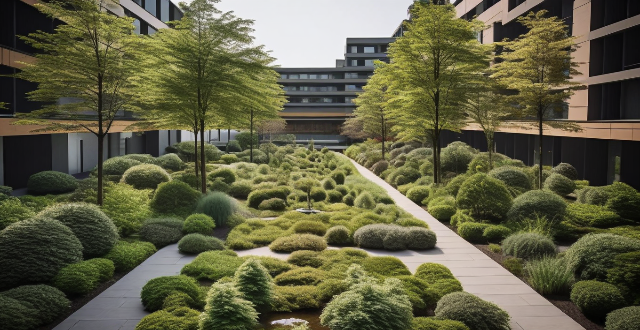
What strategies are effective in maintaining and expanding urban green spaces ?
Strategies for maintaining and expanding urban green spaces include advocacy, policy implementation, funding allocation, community involvement, innovative design, collaboration, and monitoring. Efforts should focus on educating the public, engaging stakeholders, setting minimum standards, seeking grants, encouraging philanthropy, organizing volunteer programs, promoting community gardens, using native plants, fostering inter-agency cooperation, partnering with private sectors, conducting regular inspections, establishing performance metrics, and creating feedback mechanisms.

How can we promote the use of green technology ?
Green technology is essential for mitigating climate change and ensuring a sustainable future. To promote its use, strategies include education campaigns, integrating sustainability into school curricula, offering financial incentives and tax breaks, implementing regulations, funding research and development, encouraging corporate responsibility, supporting community projects, showcasing successes, participating in global agreements, promoting eco-labeling, and encouraging green marketing. These efforts can drive innovation, create jobs, and foster economic development sustainably.

What are the best disinfection methods for public spaces during a pandemic ?
Best disinfection methods for public spaces during a pandemic include regular cleaning and disinfection, use of UV-C light disinfection, hand hygiene facilities, and air filtration systems. Regular cleaning and disinfection of high-touch surfaces helps to remove any potential contaminants and reduce the risk of transmission. UV-C light has been shown to effectively kill viruses and bacteria by damaging their DNA or RNA structure. Providing adequate hand hygiene facilities encourages individuals to maintain good hand hygiene practices. Installing air filtration systems with HEPA filters can help to reduce the concentration of airborne particles in public spaces.

Is Wi-Fi 6 suitable for large office spaces or only for homes ?
Wi-Fi 6, or 802.11ax, is the latest wireless networking standard that promises faster speeds, better range, and improved network capacity. While it is primarily designed for home use, it can also be suitable for large office spaces under certain conditions. Advantages of Wi-Fi 6 in Large Office Spaces: Increased Speed and Efficiency: Wi-Fi 6 offers higher data rates and improved spectral efficiency, which means faster internet speeds and reduced latency. This is particularly beneficial in large office spaces where multiple devices are connected to the same network. Improved Network Capacity: With the increasing number of devices in a typical office environment, Wi-Fi 6 provides enhanced network capacity by allowing more devices to connect simultaneously without sacrificing performance. Better Range: Wi-Fi 6 has improved range compared to its predecessors, making it suitable for larger office spaces where coverage may be an issue. Target Wake Time (TWT): This feature reduces power consumption by allowing devices to sleep and wake up at scheduled times, which is especially useful in office environments where energy efficiency is crucial. Disadvantages of Wi-Fi 6 in Large Office Spaces: Cost: Upgrading to Wi-Fi 6 equipment can be expensive, both in terms of hardware and installation costs. For large office spaces, this investment may not always be feasible or cost-effective. Compatibility Issues: Not all devices support Wi-Fi 6 yet, so there may be compatibility issues when integrating older devices into the new network. Complexity: Managing a Wi-Fi 6 network in a large office space can be complex due to the sheer number of devices and users involved. Proper planning and management are essential to ensure optimal performance. Conclusion: While Wi-Fi 6 is primarily designed for home use, it can also be suitable for large office spaces under certain conditions. The advantages of increased speed, improved network capacity, and better range make it a viable option for businesses looking to upgrade their wireless infrastructure. However, the potential disadvantages such as cost, compatibility issues, and complexity should also be considered before making a decision.

What are the benefits of green jobs ?
Green jobs, also known as sustainable jobs or eco-friendly employment, refer to positions that contribute positively to the environment and help in mitigating climate change. These jobs are often focused on renewable energy, energy efficiency, pollution control, waste management, and environmental conservation. The benefits of green jobs are multifaceted and can be categorized into economic, environmental, and social dimensions. In summary, green jobs offer a triple win by stimulating economic growth, protecting the environment, and enhancing social well-being. As societies continue to prioritize sustainability, the importance of these jobs will only increase, making them a cornerstone of future employment landscapes.

What role do banks play in promoting green finance ?
Banks promote green finance by offering loans for sustainable projects, investing in eco-friendly companies, and introducing green products. They also educate customers on sustainability and collaborate with governments and NGOs to support green initiatives.
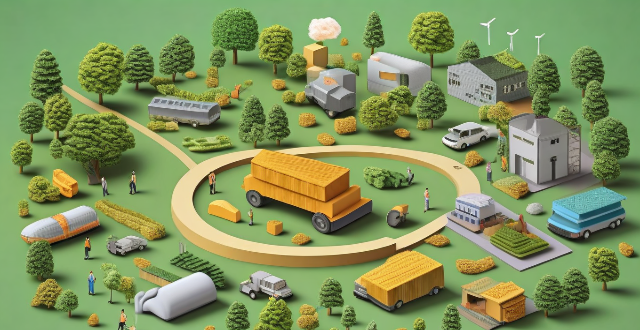
What role do green bonds and other financial products play in climate financing ?
Green bonds and other financial products are crucial for climate financing, enabling investors to support environmentally friendly projects. These instruments fund renewable energy, energy efficiency, waste management, biodiversity conservation, and other eco-friendly initiatives, contributing to climate change mitigation and sustainable development. Key features of green bonds include transparency and verification, offering benefits such as attracting capital and pricing advantages but facing challenges like standardization and secondary market liquidity. Other financial products include climate-themed investment funds, CERs, green loans, and credit facilities, which directly finance green projects and stimulate innovation in sustainable practices. By aligning financial returns with environmental benefits, these instruments play a vital role in mobilizing private capital towards climate action, helping to bridge the funding gap for sustainable projects and mitigate climate change.
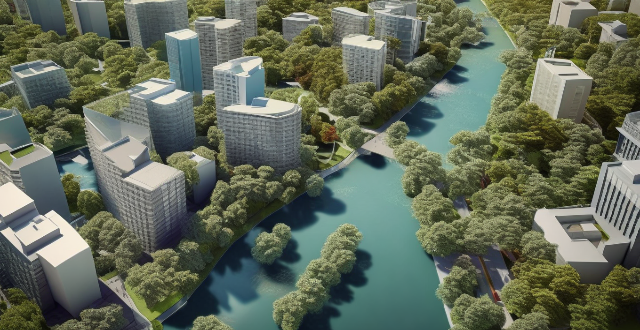
What is the significance of green infrastructure in managing urban runoff and improving water quality ?
Green infrastructure (GI) is a sustainable approach that uses natural processes to manage stormwater, reduce pollution, and enhance the overall health of urban ecosystems. It plays a crucial role in managing urban runoff and improving water quality. Some benefits of GI include reducing stormwater runoff, improving water quality, enhancing habitat and biodiversity, and mitigating climate change impacts. To effectively implement green infrastructure in urban areas, factors such as site selection, design considerations, and maintenance and management should be considered. Proper maintenance and management are essential for ensuring the long-term success of green infrastructure projects. By implementing effective green infrastructure practices, cities can create healthier, more resilient environments for both people and wildlife.

How does green finance contribute to sustainable development ?
Green finance plays a pivotal role in driving sustainable development by channeling financial resources towards environmentally friendly projects and initiatives. Here's a detailed look at how it contributes: 1. Promoting Renewable Energy 2. Supporting Green Infrastructure 3. Advancing Clean Technology 4. Influencing Corporate Behavior 5. Regulating Financial Markets 6. Educating Investors and the Public

What is green finance ?
Green finance is the use of financial instruments and strategies to support environmentally friendly projects. It includes sustainable investing, green bonds, green banks, carbon credits, impact investing, climate-related disclosures, ESG criteria, green indexes, green funds, green insurance, green tax incentives, green microfinance, green real estate, green technology, and green partnerships. The goal of green finance is to promote economic growth while minimizing negative impacts on the environment.

What is the future outlook for green jobs ?
The future outlook for green jobs is promising, asThe future outlook for green jobs is promising, as eco-friendly practices continues to The key factors driving this growth include government policies, consumer demand, technological advancements, corporate social responsibility, and international collaboration. Examples of green jobs include renewable energy technicians, sustainability managers, green building designers, waste management professionals, conservation scientists, and environmental lawyers.

How do green roofs and walls contribute to city greening ?
Green roofs and walls contribute to city greening by improving air quality, mitigating the urban heat island effect, enhancing biodiversity, managing stormwater, increasing energy efficiency, providing aesthetic value, and promoting community well-being.

What are the best practices for integrating sports with public spaces in city planning ?
Integrating sports with public spaces in city planning is essential for promoting physical activity, community engagement, and social interaction. Best practices include prioritizing active transportation, including multifunctional spaces, encouraging community participation, promoting safety and accessibility, fostering partnerships with local organizations, utilizing technology and innovation, and considering sustainability and environmental impact. By following these best practices, cities can create vibrant and inclusive environments that promote physical activity, social interaction, and overall well-being among residents.

What role does government play in promoting green technology ?
The government plays a crucial role in promoting green technology. This is because the government has the power to create policies and regulations that can encourage the adoption of sustainable practices and technologies. Here are some ways in which the government can promote green technology: 1. Funding and Incentives 2. Regulations and Standards 3. Public Awareness Campaigns 4. Collaboration with Industry

How does green technology help the environment ?
Green technology, or clean technology, includes various techniques and products designed to reduce environmental harm. Its benefits include reducing greenhouse gas emissions, conserving natural resources, protecting ecosystems, reducing waste, and promoting sustainable practices. These technologies help minimize pollution, save energy, preserve water, maintain biodiversity, and encourage recycling and responsible waste management. As green technology advances, its positive impact on the environment is expected to increase.

What role do governments play in promoting the use of green bonds ?
Governments play a crucial role in promoting the use of green bonds by providing incentives for issuance, establishing regulations and disclosure requirements, issuing their own green bonds, and promoting education and awareness campaigns. These actions help accelerate the transition to a more sustainable economy and address pressing environmental challenges facing our planet.

What are the benefits of using green packaging ?
Using green packaging has become increasingly popular in recent years as people have become more aware of the environmental impact of traditional packaging materials. Green packaging refers to eco-friendly and sustainable packaging solutions that are designed to reduce waste, conserve resources, and minimize pollution. Here are some of the benefits of using green packaging: Reduced Environmental Impact: - Lower Carbon Footprint: Green packaging materials often require less energy to produce than traditional materials, resulting in a lower carbon footprint. - Biodegradable and Recyclable: Many green packaging options are made from biodegradable or recyclable materials, reducing the amount of waste that ends up in landfills. - Reduced Pollution: Green packaging helps to reduce pollution by minimizing the use of harmful chemicals and toxins in the production process. Cost Savings: - Long-Term Cost Efficiency: While green packaging may initially be more expensive than traditional options, it can lead to long-term cost savings due to reduced waste disposal costs and increased efficiency in production processes. - Tax Incentives and Grants: Many governments offer tax incentives and grants for businesses that implement eco-friendly practices, including the use of green packaging. Improved Brand Image: - Enhanced Corporate Social Responsibility (CSR): Using green packaging demonstrates a commitment to sustainability and social responsibility, which can enhance a company's reputation and appeal to environmentally conscious consumers. - Increased Customer Loyalty: Consumers who value eco-friendly practices are likely to choose products with green packaging over those with traditional packaging, leading to increased customer loyalty and sales. Innovation and Creativity: - Stimulates Innovation: The need for sustainable packaging solutions encourages companies to invest in research and development, leading to innovative new products and processes. - Design Flexibility: Green packaging materials can often be molded into unique shapes and sizes, allowing for greater creativity in product design. Health Benefits: - Reduced Exposure to Harmful Chemicals: Green packaging materials are often free from harmful chemicals and toxins, reducing the risk of exposure for both consumers and workers involved in the production process. - Improved Food Safety: Eco-friendly packaging materials can help maintain food quality and safety by preventing contamination and extending shelf life.

How can investors identify credible green bond opportunities ?
Investing in green bonds is becoming increasingly popular as more investors seek to align their portfolios with environmental sustainability goals. However, it is crucial for investors to identify credible green bond opportunities to ensure that their investments truly contribute to positive environmental impacts. Here are some key steps and considerations for identifying credible green bond opportunities: 1. Understand the definition of green bonds. 2. Look for certification and verification. 3. Examine the use of proceeds. 4. Assess the environmental impact. 5. Check transparency and reporting. 6. Consider the credit quality. 7. Review the legal framework. 8. Consult professional advice.
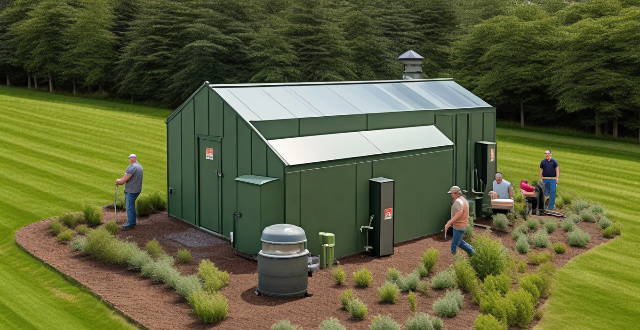
Can green bonds help fight climate change effectively ?
Green bonds, a type of fixed-income instrument, are issued to fund environmentally friendly projects that aim to reduce greenhouse gas emissions and promote sustainable development. They can effectively contribute to the fight against climate change by incentivizing renewable energy projects, supporting energy efficiency and conservation, investing in low-carbon infrastructure, promoting sustainable agriculture and forestry, and advancing research and development. However, challenges such as ensuring transparency and accountability, achieving scale and impact, integrating with broader climate strategies, and engaging diverse investors must be addressed to fully realize their potential. As the market for green bonds grows, they remain an important tool in combating climate change effectively.

What is green technology ?
Green technology, also known as "clean technology"Green technology, also known as "clean technology" technology," refers to the practice The goal of green technology is to reduce pollution, conserve natural resources, and promote sustainable development. Key features of green technology include energy efficiency, renewable energy sources, resource conservation, water conservation, pollution reduction, sustainable transportation, building design, and waste management. The benefits of green technology include environmental impact, economic benefits, public health, energy security, and climate change mitigation. In conclusion, green technology represents a fundamental shift towards environmentally responsible practices across various industries and aspects of daily life. Its adoption is crucial for addressing global challenges such as climate change, resource depletion, and environmental degradation.
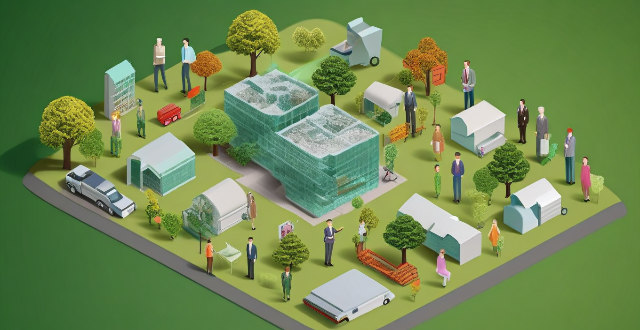
What industries offer the most green job opportunities ?
Green jobs are positions that help to preserve or improve the environment. As society becomes more aware of environmental issues and the need for sustainable development, green jobs are becoming increasingly popular. The industries offering the most green job opportunities include renewable energy, environmental science and conservation, sustainable agriculture, waste management and recycling, and green building and construction. Jobs in these sectors range from engineers and technicians to researchers and educators.

What are some challenges faced by green technology ?
Green technology, or environmentally friendly and sustainable technology, faces several challenges that hinder its widespread adoption. These include high initial investment and maintenance costs, limited access to resources such as rare raw materials and energy infrastructure changes, technological limitations in performance and compatibility, regulatory challenges including lack of uniform standards and bureaucratic hurdles, market barriers like consumer awareness and competition from established technologies, social and cultural factors such as resistance to change and education/training limitations, and potential environmental trade-offs and resource depletion concerns. Addressing these issues through policy initiatives, research and development, education programs, and public awareness campaigns is crucial for the successful integration of green technology into society.